Two identical balls and . each of mass and radius , are suspended vertically from inextensible strings as shown in Fig. The third ball of mass and radius falls and hits and symmetrically with . Speed of both and just after the collision is .
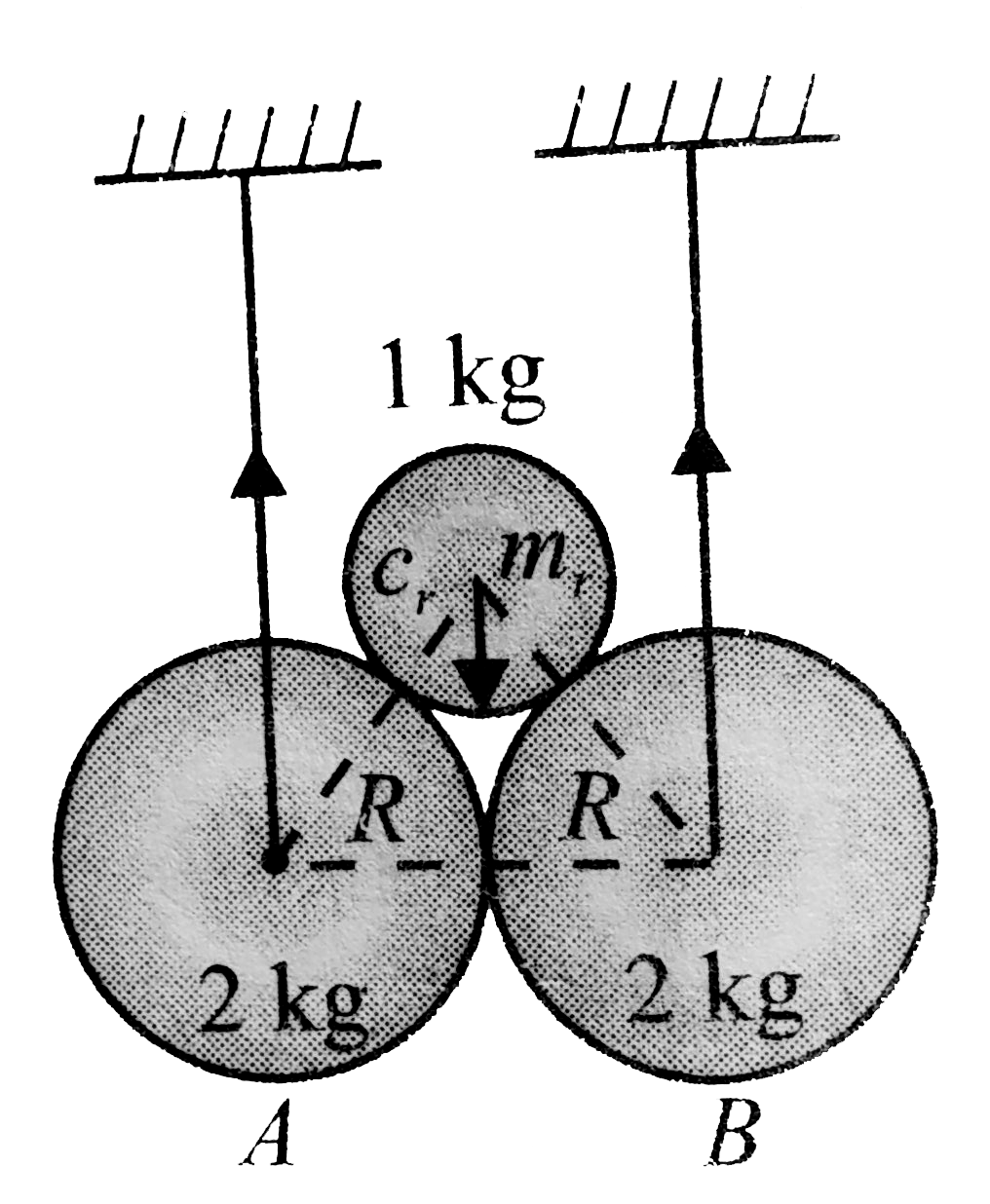
The value of coefficient of restitution is
The correct Answer is:D
Topper's Solved these Questions
- CENTRE OF MASSBook:CENGAGE PHYSICS ENGLISHChapter:CENTRE OF MASSExercise:Integer
Explore 16 Videos
- CENTRE OF MASSBook:CENGAGE PHYSICS ENGLISHChapter:CENTRE OF MASSExercise:Fill In The Blanks
Explore 2 Videos
- CENTRE OF MASSBook:CENGAGE PHYSICS ENGLISHChapter:CENTRE OF MASSExercise:Assertion - Reasoning
Explore 2 Videos
- CALORIMETRYBook:CENGAGE PHYSICS ENGLISHChapter:CALORIMETRYExercise:Solved Example
Explore 13 Videos
- DIMENSIONS & MEASUREMENTBook:CENGAGE PHYSICS ENGLISHChapter:DIMENSIONS & MEASUREMENTExercise:Integer
Explore 2 Videos
Similar Questions
Two identical balls A and B. each of mass 2kg and radius R, are suspended vertically from inextensible strings as shown in Fig. The third ball C of mass 1kg and radius r=(√2−1)R falls and hits A and B symmetrically with 10m/s. Speed of both A and B just after the collision is 3m/s.
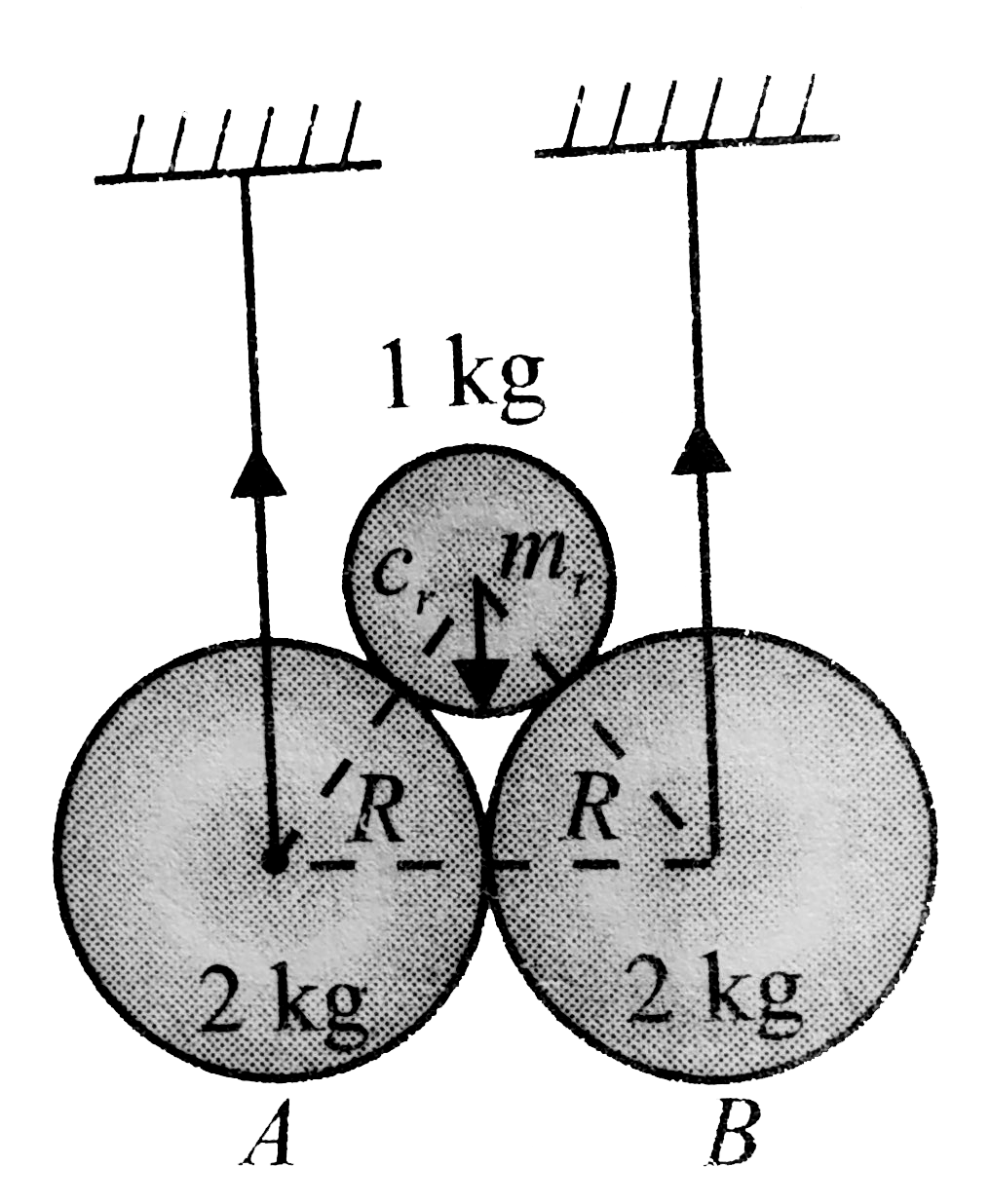
speed of C just asfter collision is
View SolutionTwo identical balls A and B. each of mass 2kg and radius R, are suspended vertically from inextensible strings as shown in Fig. The third ball C of mass 1kg and radius r=(√2−1)R falls and hits A and B symmetrically with 10m/s. Speed of both A and B just after the collision is 3m/s.
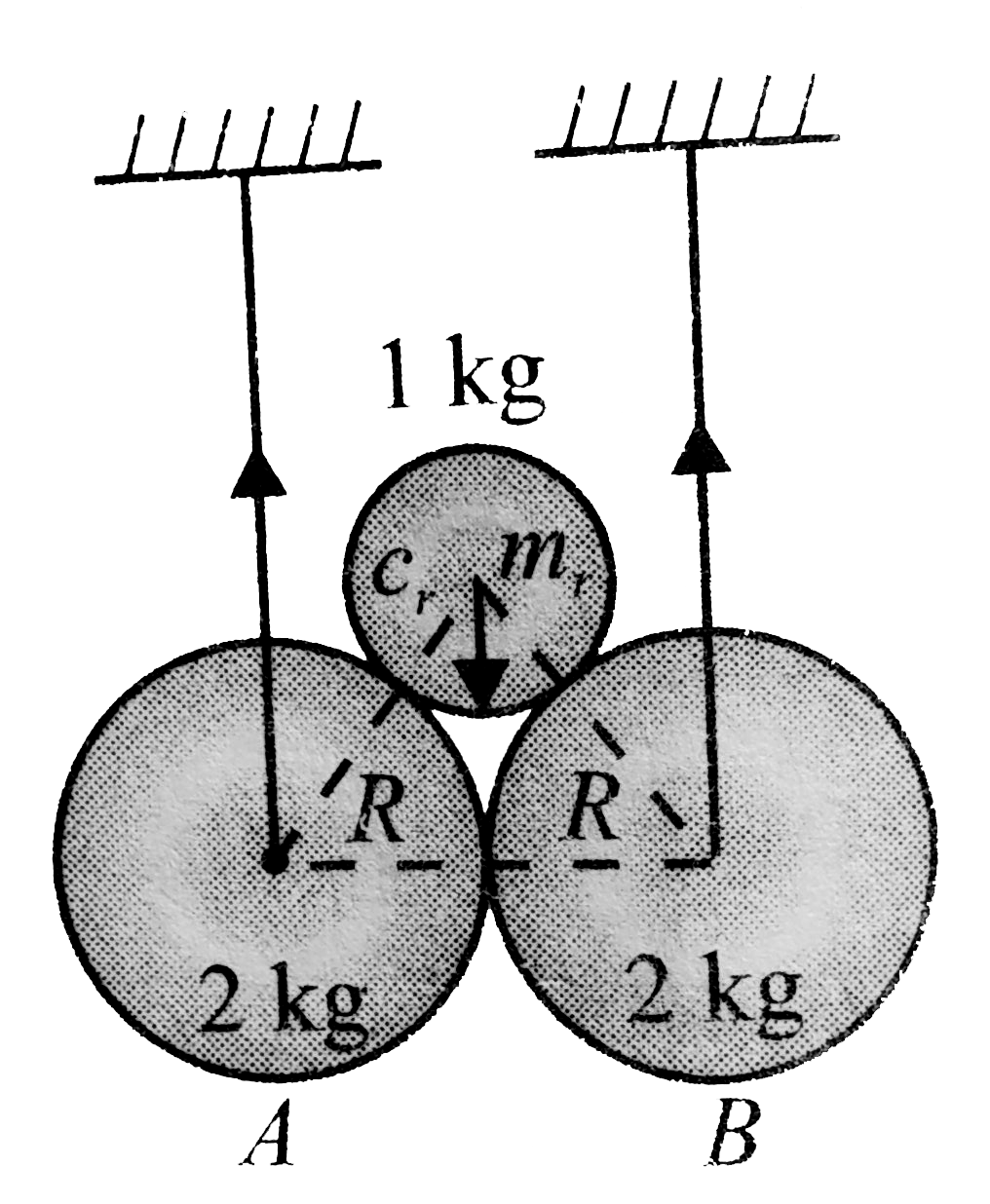
Impulse provided by each sting during collision is
View SolutionThree solid spheres each of mass m and radius R are released from the position shown in Fig. What is the speed of any one sphere at the time of collision?
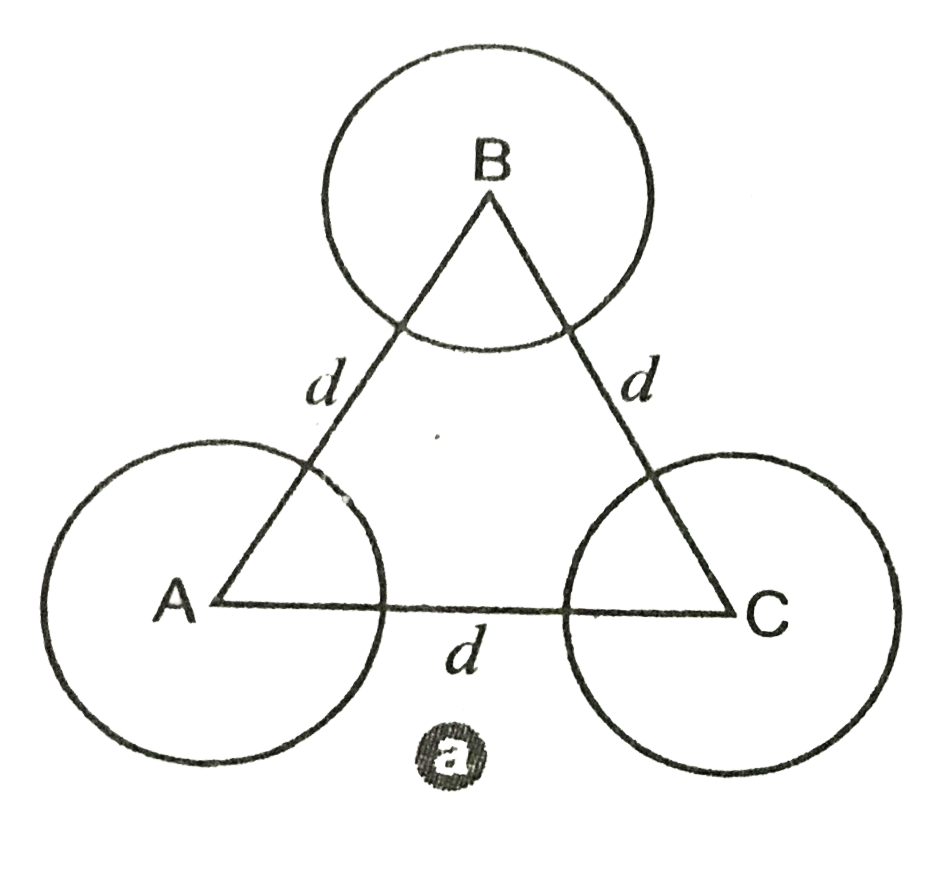
View SolutionIn the figure shown, the two identical balls of mass M and radius R each, are placed in contact with each other on the frictionless horizontal surface. The third ball of mass M and radius R/2, is coming down vertically and has a velocity =v0 when it simultaneously hits the two balls and itself comes to rest. Then, each of the two bigger balls will move after collision with a speed equal to
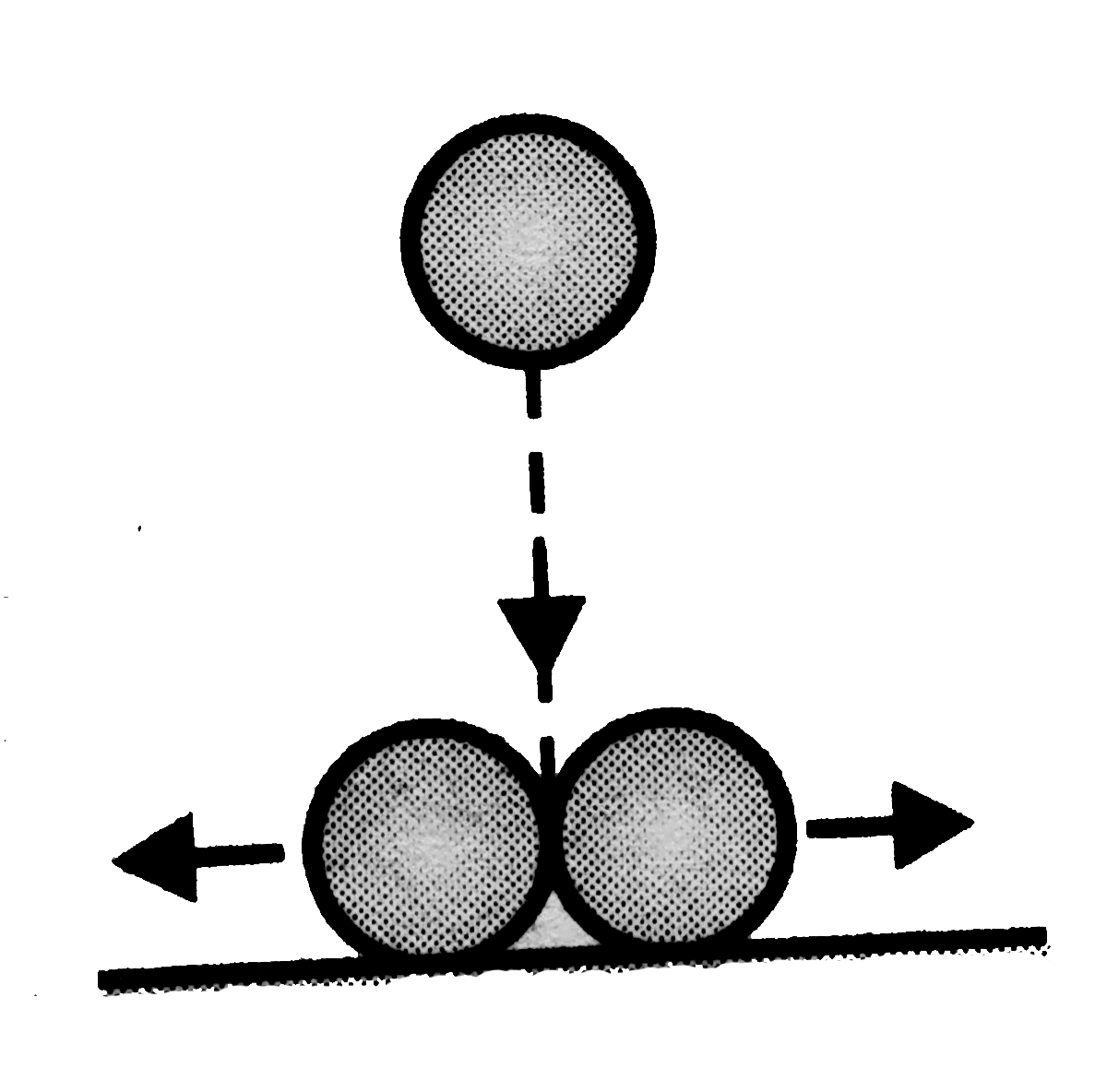
View SolutionAn iron ball of mass m, suspended by a light inextensible string of length l from a fixed point O, is shifted by θ0 as shown so as to strike the vertical wail perpendicularly.The maximum angle made by the string with vertical after the first collision, if e is the coefficient of restitution, is
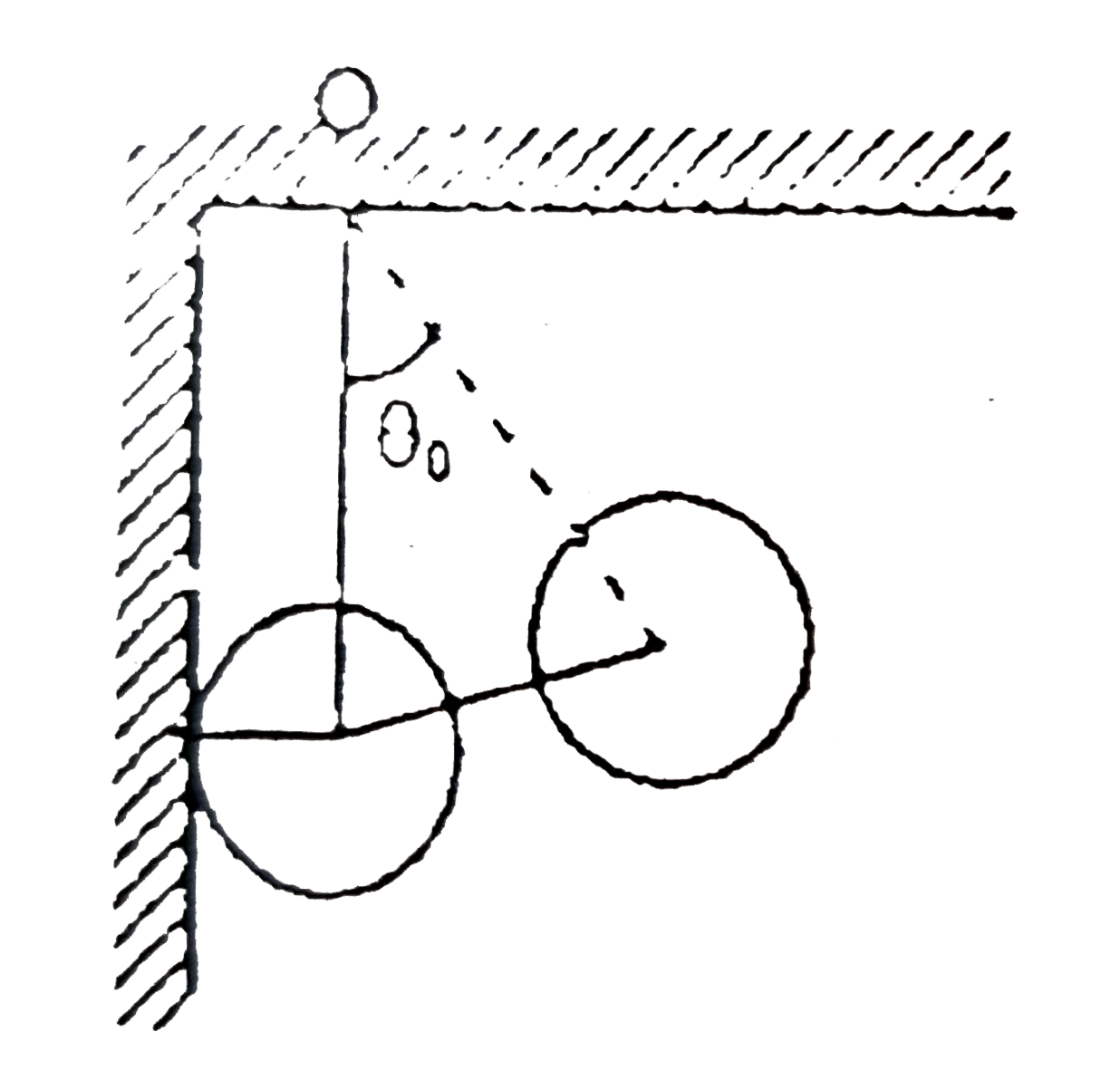
View SolutionA particle of mass m strikes a disc of radius R and mass m with a speed u as shown in the figure. What is the speed of the particle just after the collision if the collision is perfectly inelastic ?
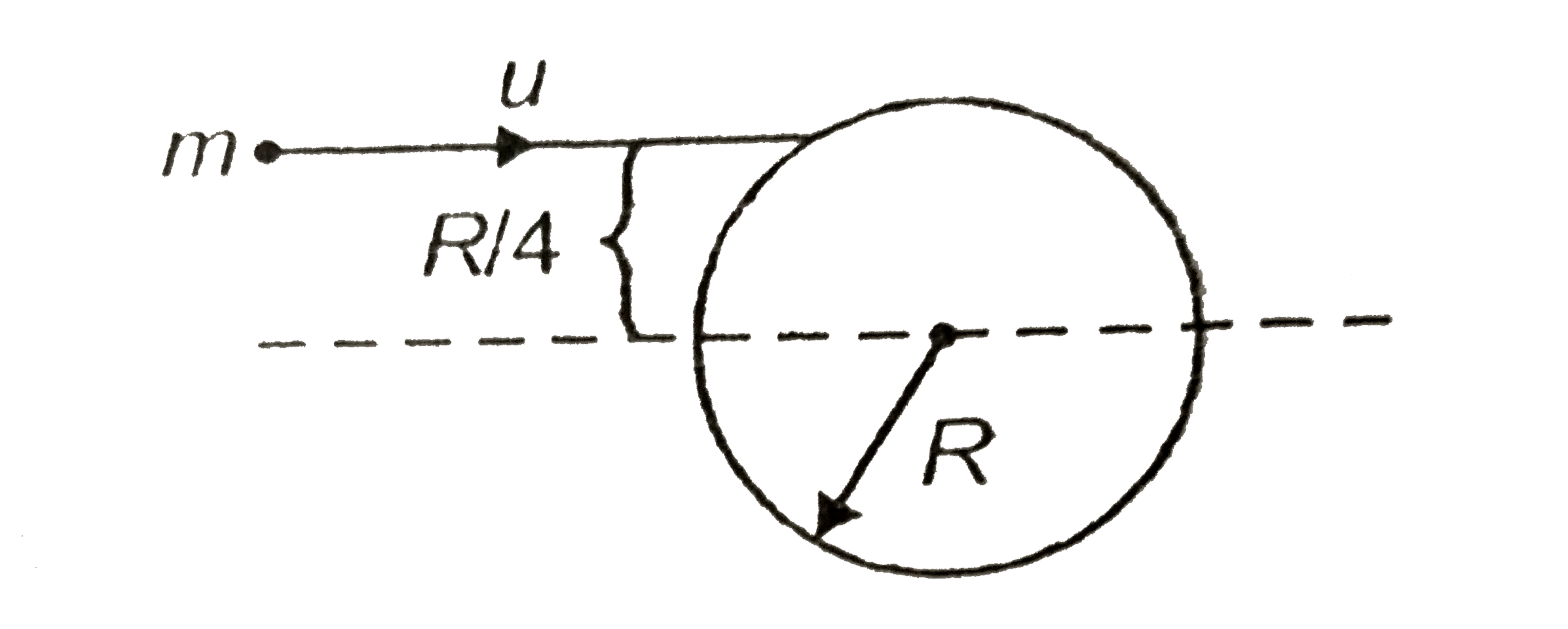
View SolutionA ball of mass 1kg hangs in equilibrium from two strings as shown in If g=10m/s2 what are the valuse of tension in strings OA and OB
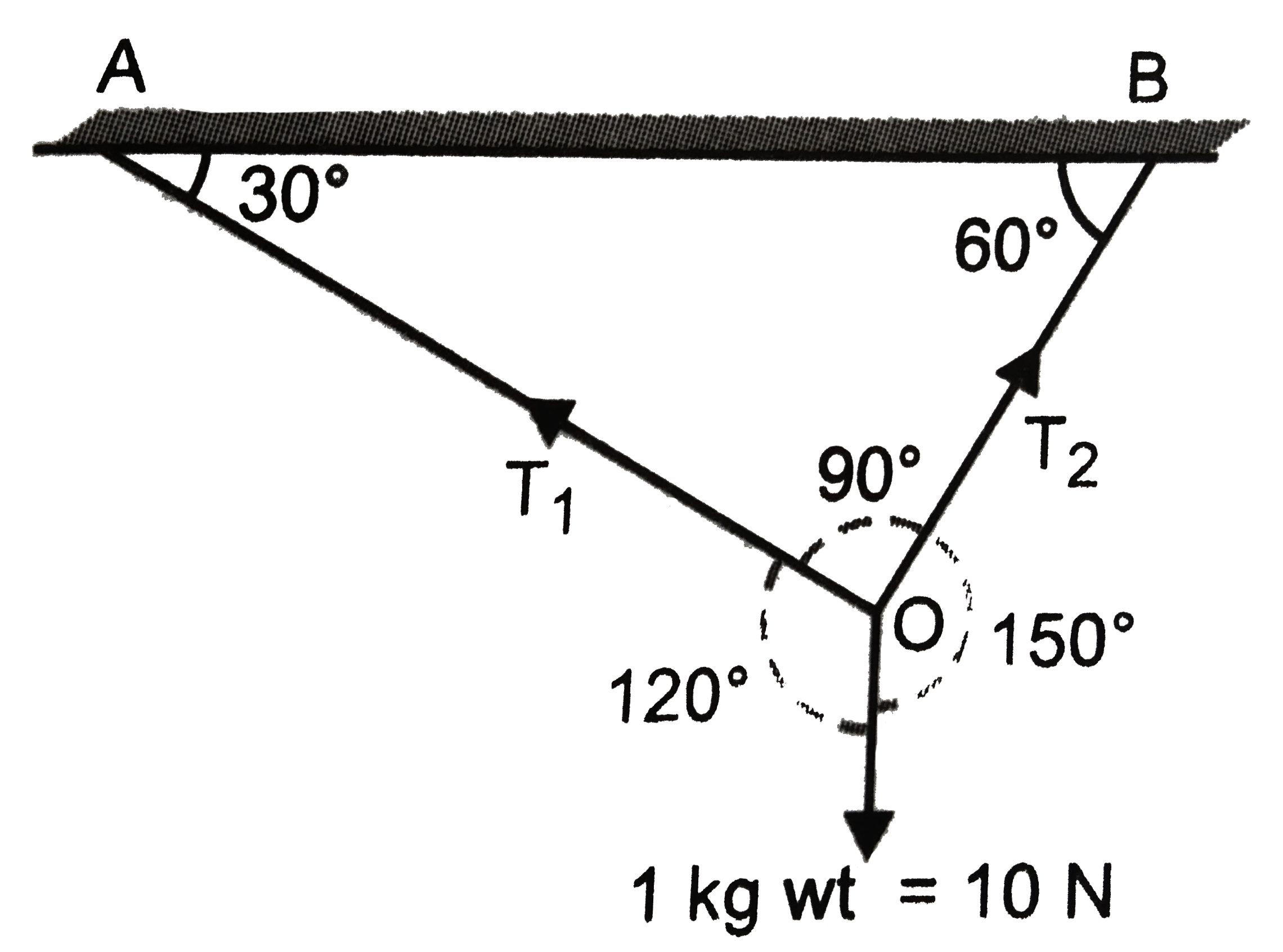 .
.
View SolutionA ball of mass 1kg strikes a heavy plarform elastically, moving upwards with a velocity of 5m/s . The speed of the ball just before the collision is 10m/s downwards. Then the impulse imparted by the platform on the ball is
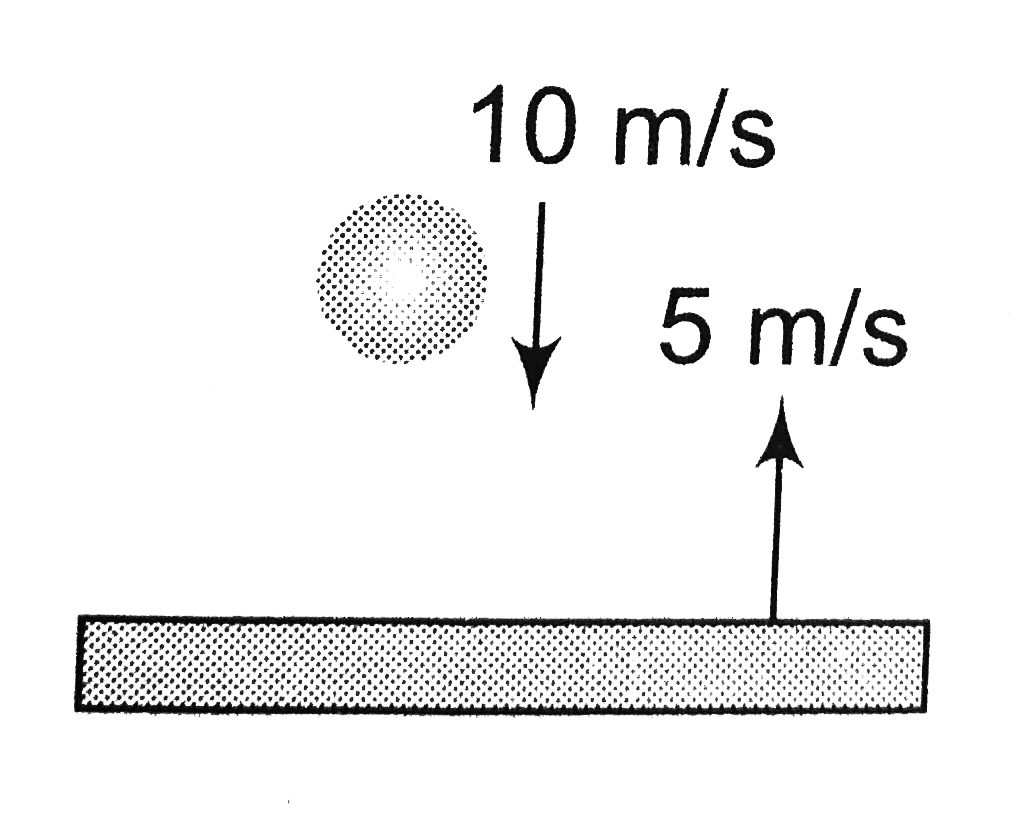
View SolutionTwo identical blocks A and B each of mass 2kg are hanging stationary by a light inextensible flexible string, passing over a light and frictionless pulley, as shown in Fig. A shell C of mass 1kg moving vertically upwards with velocity 9m/s collides with block B and gets stuck to it.
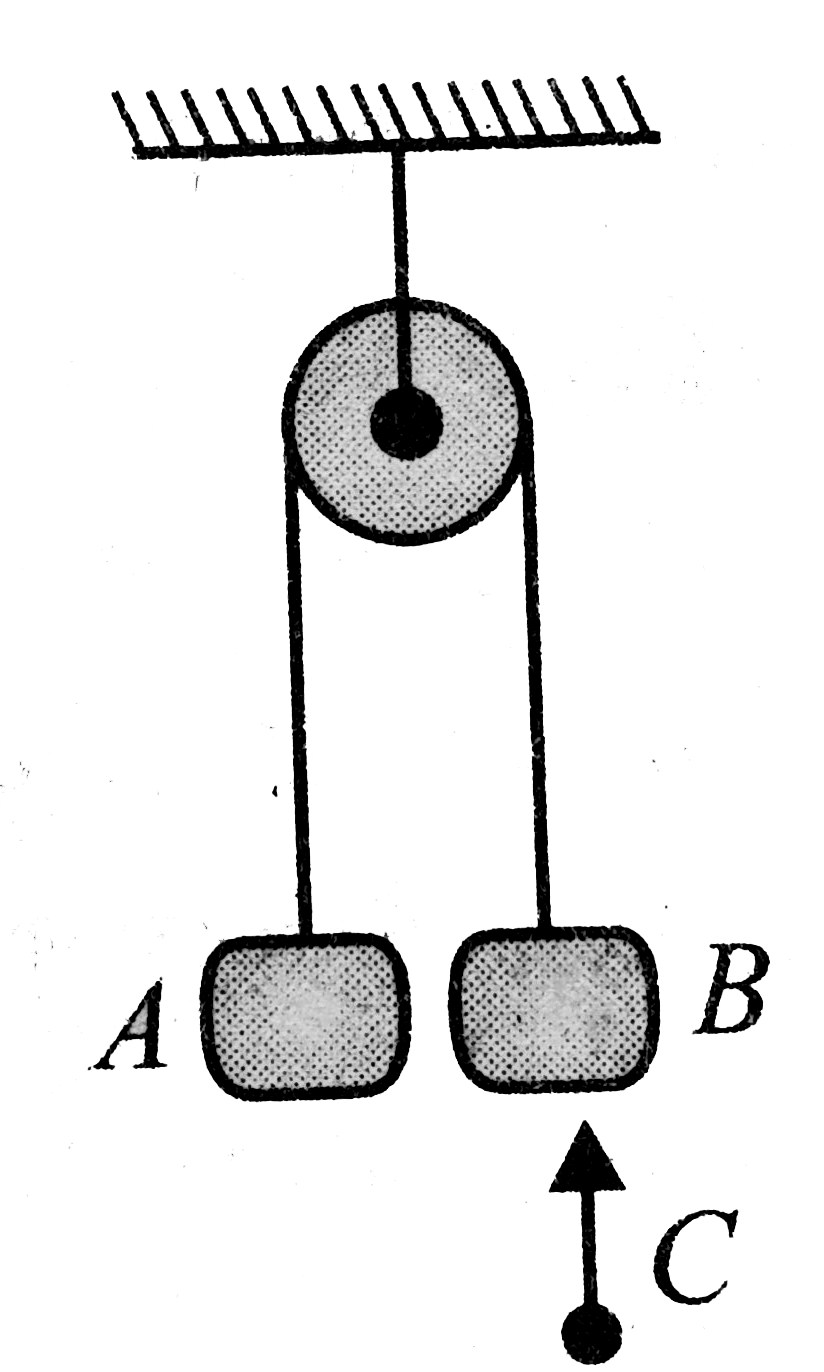
Calculate the time after which block B starts moving downwards.
View SolutionThree balls A,B and C of masses 2kg,4kg and 8kg, respectively, move along the same straight line and in the same direction, with velocities 4m/s,1m/s,34m/s. If A collides with B and subse-quently B collides with C, find the velocity of ball A and ball B after collision, taking the coefficient of restitution as unity.

View Solution
